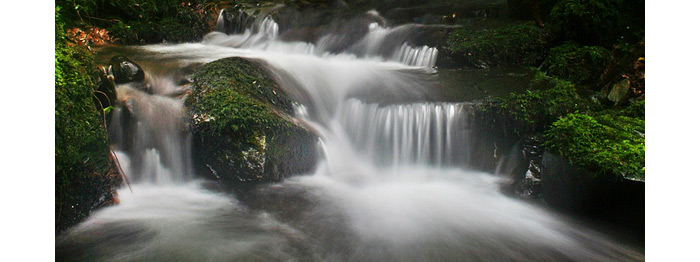The Holy Spirit as the Water of Life
The book of Revelation ends with a vision, often referred to as the vision of the New Jerusalem. It is the vision of what the Lord is aiming at in human history, what he is seeking to bring us to. In explaining the vision, the book says,
Then he showed me the river of the water of life, bright as crystal, flowing from the throne of God and of the Lamb through the middle of the street of the city; also, on either side of the river, the tree of life with its twelve kinds of fruit, yielding its fruit each month; and the leaves of the tree were for the healing of the nations.
Revelation 22:1-2
Central to this vision is the river of the water of life, which flows into and through the new Jerusalem.
The water of life comes from the throne of God and of the Lamb. On the throne we see the glory of God shining from the Lamb who is its lamp (Revelation 21:23). In other words, those who live in the city can see God’s throne in their midst and on that throne is the Lamb of God, our Lord Jesus Christ, filled with divine glory, sharing in his Father’s reign over all of creation. The water of life, then, flows from the king of the universe who has died for the redemption of the human race.
The water gives life to the city, the holy city Jerusalem (21:10). We get heavenly life by being “built into” (Ephesians 5:22) a city, a community of those redeemed by the Lord. The water makes that city into a paradise, a place where the tree of life grows. The water, in other words, restores the Garden of Eden or, better, makes the new Jerusalem into a new Eden, a place where God’s original purpose for the human race is fully accomplished.
This is a picture of the end, of what will be. But in a certain way the end is already present now. We are living “in the last days”, as the Scripture says, and we are already beginning to experience the “first installment” (Ephesians 1: 14; 2 Corinthians 5:5) of what is to be given in its fullness after the Lord Jesus comes again. The vision in Revelation, then, reveals to us what will come to pass, but also reveals to us something of what we can experience even now.
But what is the water of life?
We can find out what the water of life is by looking at a passage in the seventh chapter of the Gospel of John. It is a description of something that happened at the feast of Tabernacles or Booths in the last year of Jesus’ life. During that feast each year there was a ceremony in which water from the pool of Siloam, at the foot of the mountain spur on which the original Jerusalem was built, was carried in procession to the temple and there poured out to symbolize the redemption that the Lord gives his people. In verses 37-39 we read about what Jesus said, probably right after this ceremony:
On the last day of the feast, the great day, Jesus stood up and proclaimed, “If anyone thirst, let him come to me, and let him who believes in me drink. As the scripture has said, ‘Out of his heart shall flow rivers of living water.’” Now this he said about the Spirit, which those who believed in him were to receive; for as yet the Spirit had not been given, because Jesus was not yet glorified.
“His” in this passage probably refers to Christ. If that is so, his heart refers to the heart of Christ. The rivers of living water, then, flow out of the heart of Christ. This passage tells us that it is the Holy Spirit who is the water of life. The Holy Spirit was not given during Jesus’ lifetime, but was given when Jesus was glorified, that is, after he died, rose, and ascended to the throne of God in heaven. In other words, the water of life was poured out at Pentecost after the glorification of Jesus. It was given by him once he sat on the throne of God sharing his reign. The picture we get here corresponds closely to the one in Revelation 22, although the personal connection between the Lord Jesus and the Spirit is presented more strongly. He gives us of the Spirit that flows from him personally. …
“Spring Faith” and “Bucket Faith”
The gospel of John gives us a picture of the kind of faith that is a response to the new life the Holy Spirit gives us — spring faith. We can read about it in the fourth chapter, verses 1-14, where Jesus has a discussion with the Samaritan woman at Jacob’s well in the land of Samaria:
Interchange 1
There came a woman of Samaria to draw water. Jesus said to her,
Give me a drink.
For his disciples had gone away into the city to buy food.
The Samaritan woman said to him,
How is it that you, a Jew, ask a drink of me, a woman of Samaria?
For Jews have no dealings with Samaritans.
Jesus answered her,
If you knew the gift of God, and who it is that is saying to you, ‘Give me a drink,’ you would have asked him, and he would have given you living water.
Interchange 2
The woman said to him,
Sir, you have nothing to draw with, and the well is deep; where do you get that living water? Are you greater than our father Jacob, who gave us the well, and drank from it himself, and his sons, and his cattle?
Jesus said to her,
Every one who drinks of this water will thirst again, but whoever drinks of the water that I shall give him will never thirst; the water that I shall give him will become in him a spring of water welling up to eternal life.
The passage itself gives us background. It tells us that Jesus’ disciples had gone into the nearby city to buy food, and while he was waiting for them at the well, a Samaritan woman came to draw water. The passage also tells us that Jews have no dealings with Samaritans. That, however, is not the best translation, as we can see from the fact that the disciples had gone into the nearby Samaritan city to buy food, certainly some kind of a “dealing” with Samaritans. A better translation is Jews do not use vessels with Samaritans. Jews thought the Samaritans did not observe purity laws properly, and as a result a drinking vessel handled by a Samaritan woman was likely to be unclean and so should be avoided.
The issue, then, concerned maintaining ceremonial purity and was not a matter of simply avoiding Samaritans completely. Nor was it a matter of not speaking to women, as some authors assert to try to make the point that Jesus was more liberal than other Jews were in terms of dealing with women. It was a matter of not using a vessel that could have been made ritually impure by a Samaritan woman. Nonetheless, Jesus asked the Samaritan woman for a drink from her bucket.
The woman responded in an unfriendly manner. She wanted to know why he was doing something he is not supposed to do. Rather than give her an answer that she could under-stand as a response to her question, Jesus said, if you knew the gift of God, and who it is that is saying to you, ‘Give me a drink,’ you would have asked him, and he would have given you living water.
Living water is the literal translation of the phrase used. Flowing water is an alternate translation, since, in contrast to the water in a well or cistern, flowing water was described as living water because it moved. Probably the Samaritan woman understood Jesus to be speaking about flowing water, because she replied that the only water in the area was well water, water from Jacob’s well. Moreover, he could not even get that water, because he had nothing to draw with, no bucket, and the well was deep.
In using the phrase living water, of course, Jesus was making a play on words. The water Jesus had to give was flowing but also alive. It was, moreover, be the gift of God.
The woman’s reply to Jesus’ claim to have flowing (living) water to give was even more sarcastic than her first response. She was in effect saying, “How come you talk so big, when you cannot get yourself a drink of water”. She also recognized that he was implicitly making a claim that he had better water than Jacob’s well contained, and added, “The well was good enough for Jacob, how come it is not good enough for you. Are you such an important person?”
Jesus then responded to her, “I do not just give drinks of water. I give water that stays inside and will be a spring of water inside of people. More-over that spring will make it possible for them to have eternal life.” As we can see from what he said later on in his discussion with the Samaritan woman, this spring of water refers to the presence of the Holy Spirit in those who receive him from the Lord. He is speaking about the gift of God, the promise of the Father (Acts 1:4). This presence of the Holy Spirit is intended by God to be an ongoing presence in us giving us spiritual life until it brings us to where we should be — to heaven, to eternal life.
Distinction between “Bucket Faith” and “Spring Faith”
Using the image in this passage, we can distinguish between “bucket faith” and “spring faith.” Bucket faith is the kind that looks for divine faith outside of us [i.e. divine guidance and healing, etc.]. At times we need to look for help from God we do not have to “get bucket” faith and go after it. Spring faith relies on something we do have. It relies on the gift inside that does not go away.
To be sure, the life the Lord gives us needs to be fed at times. We need “word and sacrament” or “liturgy of the word and liturgy of the Eucharist” to use the theological phrases. We also need to have the channel cleaned out at times. We need to repent and seek forgiveness. Nonetheless, the life and strength that comes to us when we are joined to Christ is already inside of us and remains there unless something goes radically wrong.
This is where spring faith comes in. Spring faith relies on the spring of living water inside. It lives and acts in the confidence that the Holy Spirit is inside of us and is there to enlighten us and strengthen us so that we can handle the various circumstances of our life in a good Christian way.
If we are, for instance, raising a family, there are many times when we will want to get out our bucket and go for help. We may have been financially responsible, but we now need more money than we did in the past. We may have acquired much good Christian teaching and help so that we mainly know what we need to do, but now we do not have a clue how to handle something that happened to one of our children, or cannot explain a sudden turn for the worse in their life that they will not talk about. Going to the Lord for special help may be needed.
But our family life will go much better (and probably will have less special needs) if we learn to rely upon the fact that the Lord is in us. We can handle difficulties and learn how to be a parent, if we have confidence that we can rely on the Lord at work inside of us. We are his sons and daughters, filled with his Spirit, holding a privileged position. If we live and act with that confidence, with spring faith in the gift of the Lord in us, we will see a better life and better results. Spring faith does not guarantee that everything will go well, but it makes a significant difference.
Spring faith does not always work best by “claiming God’s help in faith” whenever we need it. We do not need to claim something we already have. We need to do that when we use bucket faith to get special help. Spring faith is rather an ongoing confidence in the Lord, one that is nourished day in and day out by remembering who we are, who God is, and what our relationship with God is like — what he has already given us. Sometimes it works best when it is instinctive, when we simply act with the confidence of who we are in the Lord.
This gives us our third conclusion. Our charismatic spirituality is based upon confidence that the Holy Spirit is in us and transforms, enlightens, and strengthens us so that we can be spiritual(ized) people.
This article is an abridged version of The Holy Spirit as the Water of Life, © copyright by Steve Clark. See the full version in the July 2017 Issue of Living Bulwark.
Top image of a stream on the Isle of Man, © PaJa6543 from Bigstock.com, Stock Photo ID: 3571343
Steve Clark has been a founding leader, author, and teacher for the Catholic charismatic renewal since its inception in 1967. Steve is past president of the Sword of the Spirit, an international ecumenical association of charismatic covenant communities worldwide. He is the founder of the Servants of the Word, an ecumenical international missionary brotherhood of men living single for the Lord.
Steve Clark has authored a number of books, including Baptized in the Spirit and Spiritual Gifts, Finding New Life in the Spirit, Growing in Faith, and Knowing God’s Will, Building Christian Communities, Man and Woman in Christ, The Old Testament in Light of the New.
- See articles by Steve Clark in Living Bulwark Archives



